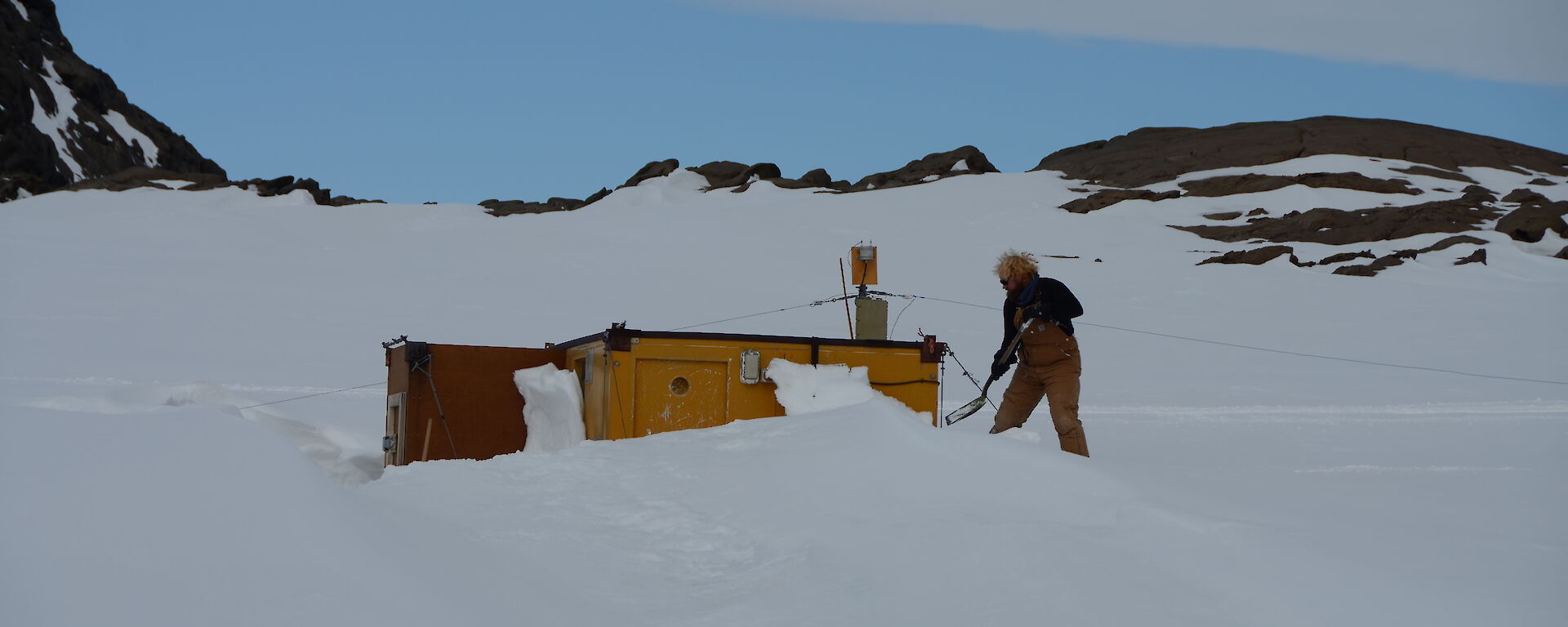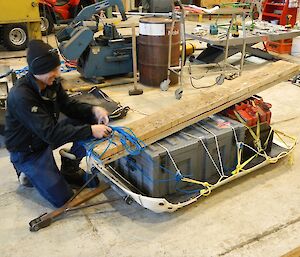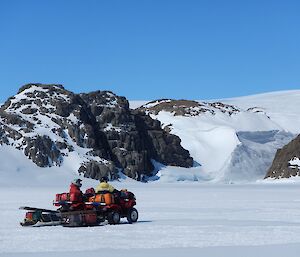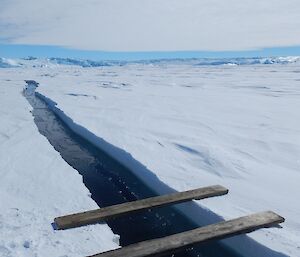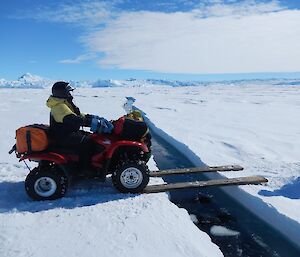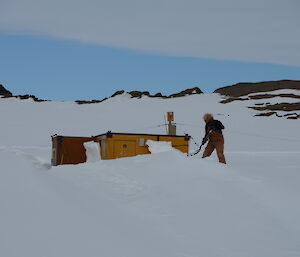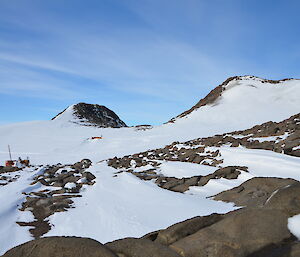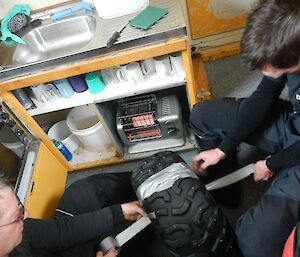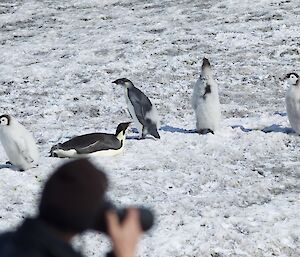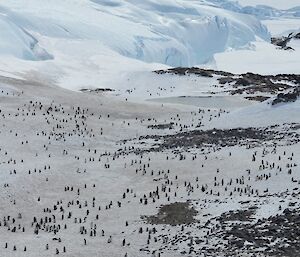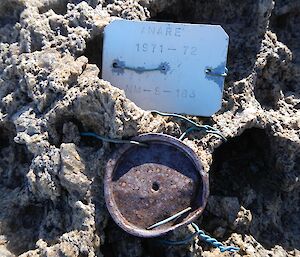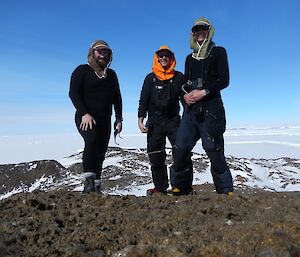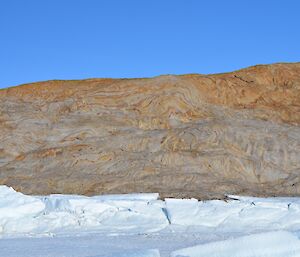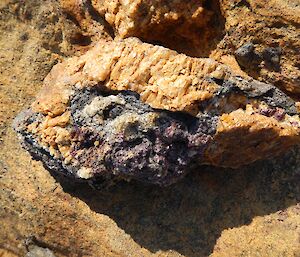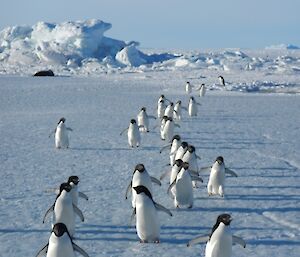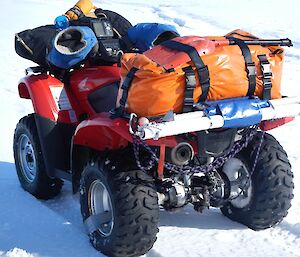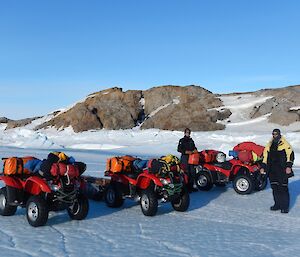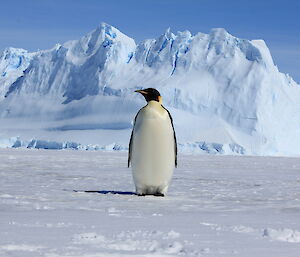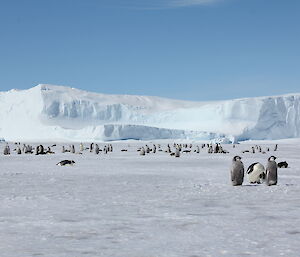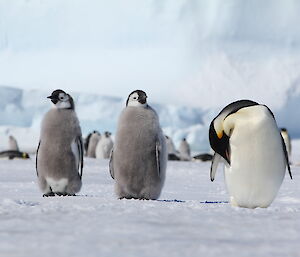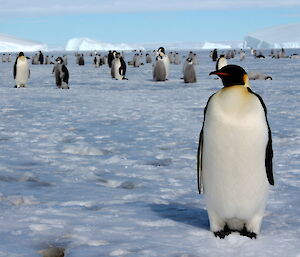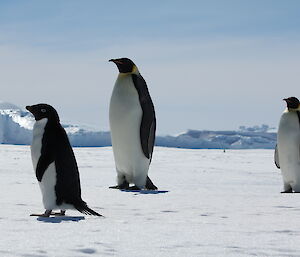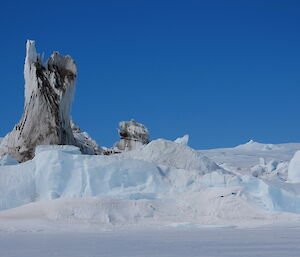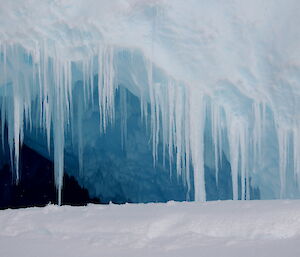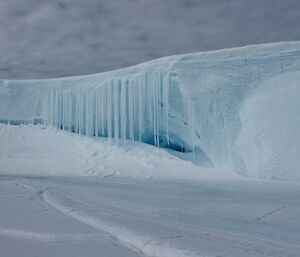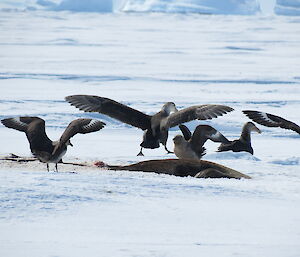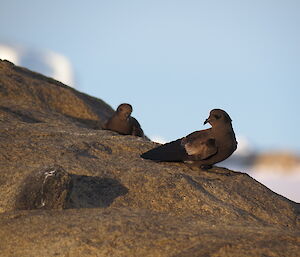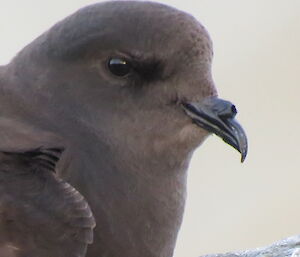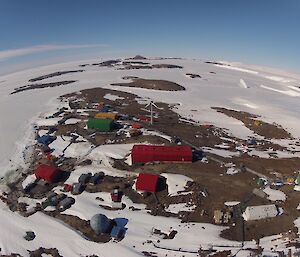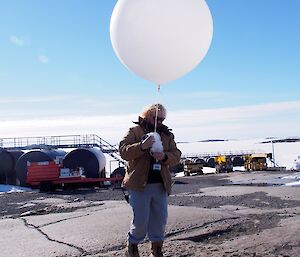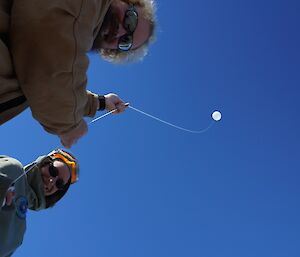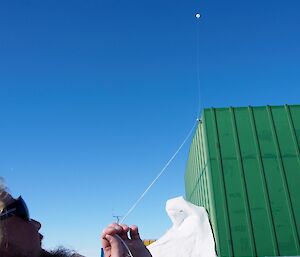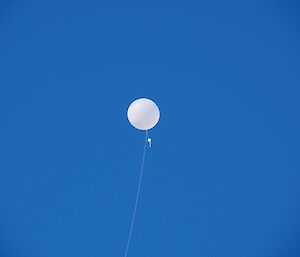The isolation of Antarctica is something that not many get to experience. At Mawson, other than the 12 Winterers remaining on station, our next nearest neighbours are over 600km away on the other side of the Amery Ice Shelf. Not being isolated enough, and having a job to do, Kelvin, Wayne and I packed our quads and sleds and fled the station to the west. Our excuse for leaving was to take the final set of census photos of the emperor penguin rookery at Taylor Glacier.
As one of the wintering crew would often say “What could possibly go wrong?”, a beautiful sunny morning, thick sea ice, plenty of fuel and supplies, well thought out and constructed sleds which towed beautifully and good, capable company. Our target, Colbeck hut, is roughly 90Km to the west of Mawson and one of the longest quad trips undertaken by any of the Australian stations. The first 50Km were rather uneventful, with only low sastrugi and a little creativity in route choice to be made around Gibbney Island, with an open tide crack running to the north which had Adelie and emperor penguins, as well as weddell seals, all feeding. We stopped for a quick lunch in the Stanton group and made the assumption that the fantastic surface conditions (flat hard ice with little snow) would continue around the tongue of the Jelbart Glacier.
It wasn’t long until we were proven wrong with the sastrugi (semi-hard snow banks up to around a meter high) appearing and a few open tide cracks, which had been covered in snow. Our progress was slowed as we took care to probe and drill the cracks to ensure they would sustain the weight of our quads and sleds. We had to check that the gaps weren’t too large, cold and wet as this is not a preferable state. We carried four large planks in case we needed to cross larger gaps and made use of these on a couple of occasions. After pushing the quads out of a couple of bogs (soft snow), we ended up removing our outer layers and were riding in only our thermal tops and insulated pants and still complaining of being too warm.
Arriving at Colbeck, the all too familiar sight of the hut being buried in snow greeted us. We dug it out then went for a quick stroll to the top of a nearby island with snow and Wilsons storm petrels flying around us to get a view of the Taylor Glacier and the Colbeck area.
Gaffer’s tape is a useful item to have - it can repair all sorts of things - however it was only after a bit of brainstorming that we came up with it as a solution to the puncture that had affected my quad tyre. The method for the repair had to be planned and then executed. Again, the isolation was brought home and the realisation that we were nearly 100Ks from the next nearest eight people and 700Ks from anyone further than that. There were discussions about getting another wheel and tyre delivered by plane, however with the tape wrapping system that was implemented, we were sure that the stricken quad would make it. This also meant that I wouldn’t be towing a sled for any of the trip.
So for the second day (while we had a light blizzard), the wheel was removed from the quad, heated (so the tape would be sure of sticking) and the crack was repaired. There was also a bit of reading, sleeping and quite a lot of hut cleaning and maintenance, spearheaded by our trip leader, Kelvin, who did a superb job to neaten up the drawers, shelves and the equipment stored in the hut.
After a good night’s sleep, the quads were fuelled, hut packed up for next year’s crew and the hut log was written (along with a detailed description of how to repair a crack in a tyre using only tape). The three of us (unsuccessful in gaining the station leader’s permission for another day’s jolly to make up for the bad weather on the previous day) headed to the Taylor rookery. Kelvin proceeded to photograph the rookery and the emperor penguins for the census, while Wayne and I sat and enjoyed a couple of hours watching the penguins without a lens. A quick lunch of sausage sandwiches (sorry Scottish) was enjoyed before we headed east towards Mawson again and home.
Ufs Island (Ufs means Bluff in Norwegian, I believe, as the island appears to be joined to the continent) is a large island in the Colbeck area that was too enticing not to climb, so a detour was made on the way back to station to do just that. Kelvin and I attempted to make it up the snow covered section at the base on quads, giving up when we saw that Wayne had already passed us, parking at the bottom and was walking up. Again it was a lovely sunny low-wind day, vastly different to the previous day’s blowing snow and wind. The climb to the top of Ufs was a rather pleasant way to break up the journey. At the top there was a plaque and what appeared to be a tin lid tied to the top with copper wire as well as two stakes hammered in some distance either side of the plaque. There was a little discussion as to what the purpose of the stakes was before, the obligatory photo was taken, VLV was called and estimated that we would be arriving on station about 10PM (thanks for the comms Hendo) and we proceeded to descend back to the quads enjoying the various lichens on the descent.
From Ufs there was the front of the Jelbart to cross with its numerous tide cracks to negotiate and then the cruise back to Mawson. A stop was made about half-way (at Low Tongue) for some soup and to have a quick explore of the area (as well as to add a bit of air to the taped tyre). Low Tongue is a beautiful piece of rock with wave-like patterns through it and it is adorned with red-purple garnet which is really quite beautiful. There are skuas on top of the northern section watching over the Adelie penguin colony nesting closest to the plateau.
The second half of the journey, from Low Tongue to Mawson was a lovely cruise, with the sun low in the sky, the lighting was a beautiful sight on the sea as well as the bergs. As I approached the station I was happy to see “home”, however also aware that probably my last trip to the west of the station was coming to an end.
Thanks to Kelvin and Wayne for the trip and the memories, as well as the assistance with the use of the gaffer’s tape.

